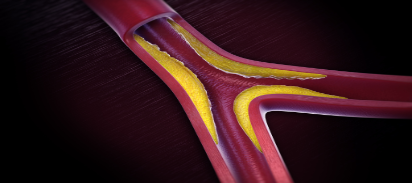Numerous sufferers with peripheral artery disease have minimal or no symptoms. Some people get leg discomfort while they walk (claudication). Muscle aches or cramps in the arms or legs that start during exertion and stop with rest are indications of claudication. Most of the time the discomfort is felt in the calf. From little to severe discomfort is experienced. It could be difficult to walk or engage in other physical activities if you have severe leg discomfort.
Other signs of peripheral artery disease might be:
- Coldness in the foot or lower leg, particularly when contrasted to the opposite side.
- Legs that feel weak or numb.
- Legs or feet without a pulse or with a faint pulse.
- Cramping that hurts after performing particular actions, such as walking or climbing stairs, in one or both hips, thighs, or calf muscles.
- Shiny leg skin.
- Leg skin color changes.
- The toenails grow more slowly.
- Unhealing sores on the toes, foot, or legs.
- When knitting, writing, or performing other manual duties, the arms may ache and cramp.
- Erection problems.
- Leg hair may be thinning or growing more slowly.
When peripheral artery disease worsens, discomfort may be felt during resting or sleeping. Sleeping difficulties might result from the pain. Walking or hanging the legs over the edge of the bed may provide momentary pain relief.
Treatment
Exercise, a good diet, and quitting smoking or using tobacco products are all part of the therapy for peripheral artery disease.
The objectives of treatment for peripheral artery disease include:
- Control symptoms, such as leg discomfort, to make the activity more bearable.
- To lower the risk of heart attack and stroke, and improve arterial health.
Peripheral artery disease is treated with lifestyle modifications and occasionally with medication.
Changes in lifestyle can assist with symptoms, particularly when peripheral artery disease is still in its early stages. The single most crucial action you can do to lower your chance of problems is to stop smoking. The symptoms can be greatly reduced by regularly exercising under supervision, such as walking or performing other activities.
Medications
Your doctor can recommend medication if signs of peripheral artery disease (PAD) are present. Medications for PAD could consist of:
- Cholesterol medications: Peripheral artery disease patients frequently receive statin prescriptions. Statins aid in lowering bad cholesterol and preventing the formation of arterial plaque. The medications also reduce the risk of stroke and heart attacks. Ask your doctor what your cholesterol levels should be if you have PAD.
- Blood pressure medications: Uncontrolled hypertension can harden and stiffen the arteries. The blood flow may be slowed by this. What blood pressure target is ideal for you should be discussed with your healthcare practitioner. Your doctor can recommend drugs to decrease your blood pressure if it is high.
- Medications for blood sugar management: Controlling your blood sugar becomes much more crucial if you have diabetes.
- Leg pain medications: The medication cilostazol makes blood vessels wider and thinner. Blood flow to the limbs is increased by it. Patients with peripheral artery disease who use this medication are especially helped with their leg discomfort. Headaches and diarrhoea are frequent negative effects of this drug.
Operations or other processes
- Angioplasty and stent placement: To treat peripheral artery disease that is causing claudication, angioplasty and stent implantation may occasionally be required. This treatment is used to unclog blocked arteries. It is able to simultaneously identify and treat a clogged vessel. A thin, flexible tube (catheter) is steered to the constricted area of the artery by the medical professional. In order to open the narrowed artery and increase blood flow, a small balloon is inflated. To maintain the artery open, a tiny wire mesh tube (stent) may be inserted into the artery.
- Bypass surgery: Using a healthy blood vessel from another area of the body or a synthetic one, the surgeon cuts a way around the blocked artery.
- Thrombolytic therapy: A clot-dissolving medication may be injected directly into the afflicted artery if a blood clot is obstructing it.




